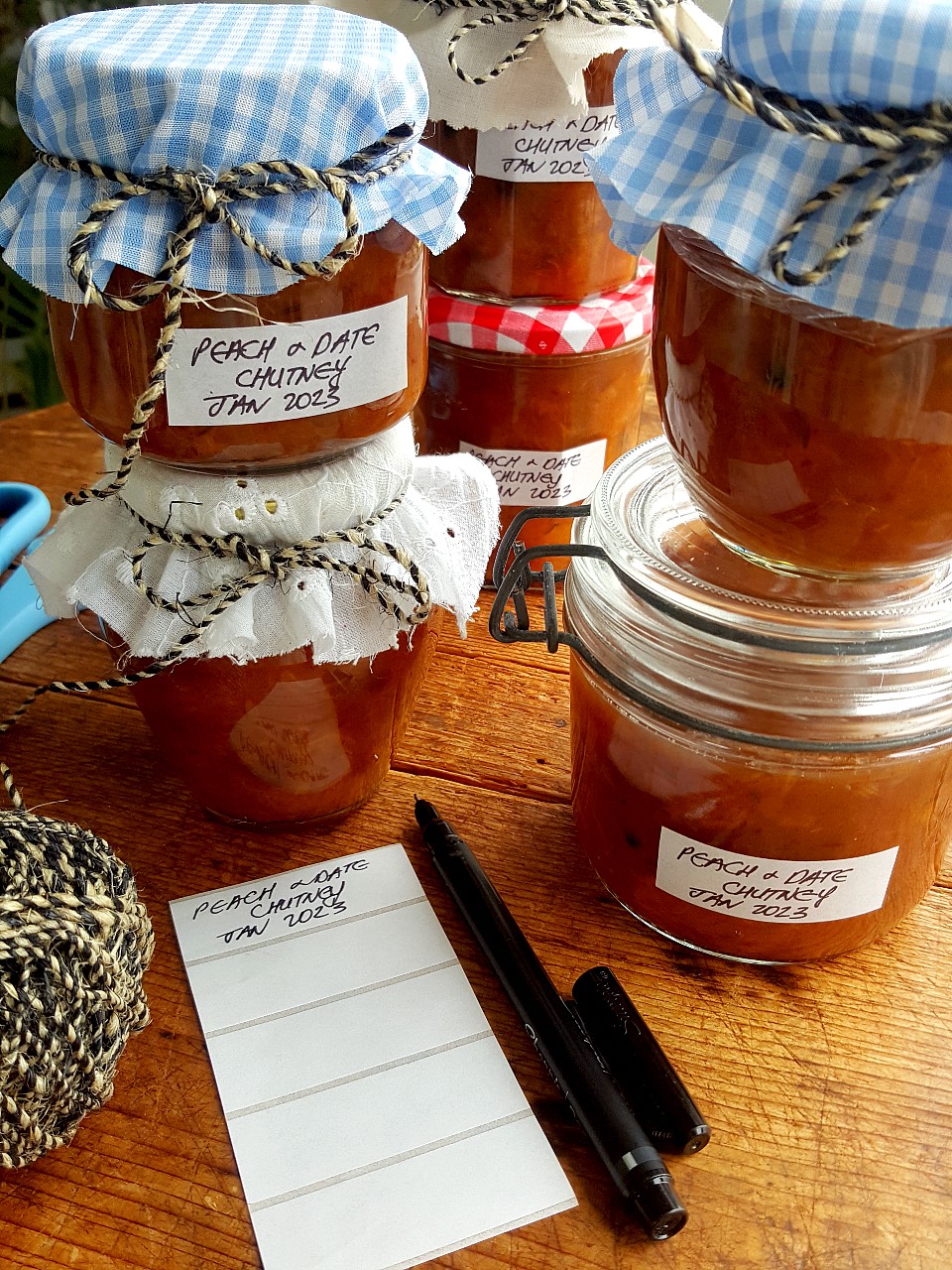Peach & Date Chutney

Introduction
Serves: Makes approximately 1750ml (about 7 cups)
Ingredients
3 large onions, peeled and chopped
2 Tbsp thyme leaves
150 g (5 oz) pitted dates, chopped
2 cloves garlic, peeled and chopped
2 Tbsp coarsely grated peeled ginger
250 g (8 oz) granulated sugar
300 ml (10 fl oz) white vinegar
2 tsp salt
2 tsp black peppercorns
Method
1 Put the peaches in a large bowl or saucepan and pour over boiling water to cover. Leave peaches immersed in the water for 1 minute. If the peaches are soft, they will be easy to peel. If they are hard, peel with a vegetable peeler. Cut peaches in half and remove stones and slice thickly (if the peaches are clingstone, meaning the flesh doesn’t come away easily from the stone, cut the flesh off the stone in large chunks).
2 Put peaches and onions in a pan with thyme, dates, garlic, ginger, sugar and vinegar. Add salt and peppercorns and bring the mixture to a gentle boil, stirring continuously, until the sugar has completely dissolved.
3 Reduce heat, and simmer the chutney, stirring often, for about 1 hour, until the chutney has thickened and is pulpy; stir often towards the end to prevent the chutney catching on the bottom of the pan.
4 Spoon chutney into warm, dry jars and put the lids on the jars. Once the chutney is cool, tighten the lids. Leave for two weeks before using. The chutney keeps for 6-12 months unopened. Refrigerate once opened.
Recipe Notes
A few tips on preserving – Always have more jars ready than you think you are going to need because it is such a hassle to run short of a jar or two. Select the jars you are going to use checking there are no chips on the rims and that the lids are in perfect condition. You can recycle jars and tops used for other preserves (but if making jam, you will not be able to use any tops that smell vinegary or spicy).
To prepare jars, first wash them in hot soapy water. Rinse thoroughly, drain on a clean cloth then dry. If you are using a lot of jars, put them in a shallow roasting tin or similar to make it easier to remove them from the oven. Transfer to a cold oven and heat it to 110°C / 225°F. Leave the jars in the oven for 30 minutes.
Wash, rinse and dry any tops. If there are metal bands, these can go in the oven; do not put anything with a seal into the oven or it may melt! When making jam, many cooks still use the old-fashioned method of covering jars with discs of cellophane and securing these with rubber bands. The cellophane shrinks as the jam cools, making an airtight seal around the rim of the jar. It’s effective and cheap.
Prep your bench by lining it with a few layers of newspaper and cover it with a clean cloth or paper towels. The newspaper will protect your bench and allow the jam or preserves to cool slowly and evenly. A cloth will need washing after use, but paper towels can be thrown away.
A jam jar funnel is a great help when ladling bubbling jam or chutney into jars. It fits inside the mouth of the jar, leaving rims clean. Always leave a little headspace at the top of each jar, rather than filling the jar to the top as you do with brine and pickling liquids.
Bang jars twice on the covered newspaper to remove big air bubbles. Ensure the rim of each jar is clean inside and out (use a hot clean cloth to wipe the jars if necessary) and put the lids on. Tighten jars, and while still hand-hot, but without moving the jars, wipe jars with a clean damp cloth and polish with a clean tea towel (it is much easier to remove sticky jam or chutney from the outside of the jar while the contents of the jar is still hottish).
Have somewhere to put the bubbling pan of jam or chutney – a cork mat, double thickness of tea towel or newspaper etc. Have ready a Pyrex jug for pouring jam or chutney into jars (I find a 500ml (1 pint) jug is ideal for small jars, but a 1-litre (2 pint) jug is better for larger jars). You’ll also need clean cloths for wiping, a long-handled wooden spoon for stirring the jam or chutney, and a thermometer warming in a jug of hot water if you have one to test the temperature when making jam.
